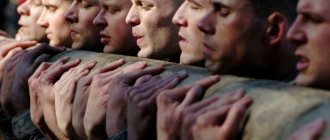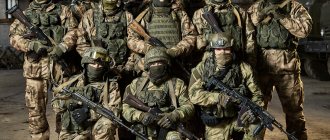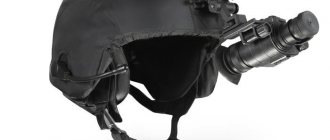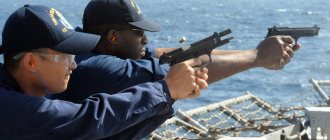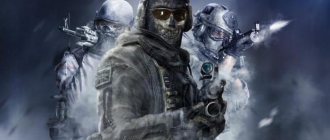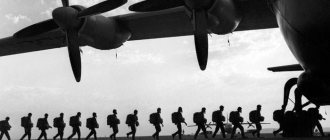Special forces are special forces combat units whose physical training is considered one of the most difficult. The fighters solve particularly difficult tasks, including the release of hostages, the capture of especially dangerous criminals and the suppression of riots. The unit recruits strong, hardy, well-trained and, most importantly, brave fighters. There is a stereotype that they should be small in stature and quite dexterous. In fact, special forces have large, pumped up bodies, and this is one of the main factors of their invincibility.
But let's not deny that training plays a huge role in the preparation of fighters. Therefore, getting closer to the ideal parameters of special forces is realistic. You just need to put in a little more effort.
View this post on Instagram
What equipment is needed for training?
It is worth saying that the entire training program can be completed at home, without resorting to purchasing expensive equipment. Basically, when performing exercises, special forces soldiers use weights, a medicine ball and a barbell. Working with kettlebells is one of the most important, since these are the exercises that build muscles and, of course, endurance.
Training with a medicine ball, on the contrary, should not cause difficulties - just stand in a pair and throw the apparatus from hand to hand. This will help increase the force of the blow and train your breathing technique.
For special forces officers, weight training is also extremely important, since in the dangerous work of soldiers it is necessary to lift weights correctly. A wounded comrade or military reserves may be in place of the barbell. Most often it is used to train the legs, because it is in the lower part of the body that most strength is collected.
Beginning of formation
Units similar to the special forces of the Russian Navy began to appear in many countries around the world shortly before the outbreak of World War II. The first experiments began only in 1938 in the Pacific Fleet, and then in the Black Sea.
At first, reconnaissance officers, who were equipped with light diving uniforms, were used to carry out operations - they were supposed to cut enemy anti-submarine networks at depth. However, until 1941, such exercises had practically no meaning, and therefore the authorities did not allow the new unit to develop. That is why, after the start of the war, they had to be created in great haste - already in August 1941, the first unit of combat swimmers appeared. Even now, the special forces of the Russian Navy are often called that way, although in their role they are more similar to “reconnaissance divers.”
What does functional training for fighters include?
Special forces soldiers begin each day with a 10 km long run over rough terrain, in full gear with an additional weight of 50 kg. The fighters are given one hour to cover the distance. This all sounds terrifying, but the hardest test is the subsequent functional circuit training, which lasts about 40 minutes. It begins at the end of the run and a five-minute rest.
Circuit training includes the following exercises:
- Push-ups on fingers – 20 times
- Squats with jumping and clapping overhead (jumps) – 10 times
- Fist push-ups – 30 times
- Squats with jumping and clapping overhead (jumps) – 10 times
- Push-ups on fingers – 5 times
- Squats with jumping and clapping overhead (jumps) – 10 times
- Fist push-ups – 30 times
- Ab crunches - to failure
- Throwing stones
Create your own workout: exercise designer for men
The editors try: features of functional training
The exercises are performed without stopping, 5-6 circles should be completed. It would seem that this is worth stopping at, but ahead of the special forces fighters are sparring and honing hand-to-hand combat techniques.
Special forces physical training
We'll agree right away. You will soberly assess your strengths. You won't try to become better than the special forces right away. In physical activity, gradualness is important. For a long time I didn’t want to write about physical training, so as not to “bring sin to my soul.” I am aware that there are people who do not know the shores who will think that this is what you need to do every day. We didn’t get off the couch for several years, and then again! And immediately to the special forces. You need to approach such loads gradually, listening to your body. And is it necessary to come to them in everyday life? In short, if you decide to study, start small and don’t tear your veins in vain. And watch your pulse.
To begin with, let’s outline the standards that we pass. They have to be taken during all physical examinations. - run 3 km. — you need to run out of 12 minutes. Everyone runs out. - either one hundred meters (13 seconds maximum), or a shuttle run of 10 x 10 meters (no more than 26 seconds). - 20 pull-ups - 12 pull-ups on the horizontal bar. - Do 30 push-ups on parallel bars. - 60 push-ups. — Bench press (your own weight) — 10 times. — KSU (more about it below). — Hand-to-hand combat (rented separately). It does not happen in the form of sparring. We pass stupid tricks. Between each exercise, up to 5 minutes of rest are given. But 3 minutes is usually enough.
As you can see, the standards are quite lenient. Extra effort is not required to pass them. But physical training has practical significance in our country, so training is not limited to these disciplines. For example running. Personally, I run not for distance, but for time. Every morning I jog for 20 minutes. Naturally, we don’t train for wear and tear. Because it cannot be ruled out that you will have to work, but you can barely drag your feet. Of course, it happens that in hand-to-hand combat they will smash your face in a fit of excitement, you walk like a zombie, dragging your leg, and you think - if only, if only, if only not to go anywhere. But this doesn't happen often. Usually we still take care of each other in sparring.
Some lift iron with “cross fits” - description below. Their role is to be very strong. Although you can exercise without going to the gym. Do you know how much a fully loaded AK weighs? No? And you won’t find out until I come back to you again - they pushed forward the topic about body kits for machine guns, now I won’t say anything about weapons in this post. ))) Well, in short, professionals have already realized that I train not strength, but endurance. It is important that the body can withstand not a short-term heavy physical load, but can calmly endure a long-term, albeit not so significant one. Naturally, I save my strength and do not allow myself to give it my all.
Three times a week we have group physical training - other than that, on this day I allow myself very little physical activity. It represents cross-fit. Horizontal bar, parallel bars, wall bars, armored personnel carrier tire, sledgehammer. 50 seconds on each apparatus with a minute of rest in between. First, warm up (10-15 minutes of running, standard exercises - high knee raises, shin sweeps, side steps, jumping, jumping out, explosive running, etc., stretching). For example, I got a horizontal bar as my first projectile. 50 seconds of pull-ups. A minute of rest. Swedish wall - 50 seconds of straight leg raises with one frequency. A minute of rest. A sharp turn over of a wheel from an armored personnel carrier - 50 seconds. A minute of rest. You hit the wheel of an armored personnel carrier with a sledgehammer for 50 seconds with a spinning amplitude (with all its scope, in short). And this is a different wheel from an armored personnel carrier, and not the one rolled by another fighter)))). A minute of rest. Bars. 50 seconds of dips. A minute of rest. Push-ups – 50 seconds. This is repeated three times. Some fighters do cross-fit exercises with weights, but I don’t participate in them (lying barbell chest press, barbell squat, standing barbell raise, abs, and lower back exercise). The weight of the bar is not large, about its own weight.
Three more times a week (the day after “cross-fit”, everyone does the Cooper test (KSU - Complex of strength exercises). 10 push-ups, immediately after it without a pause - sharply pulling the knees to the chest in a lying position, also 10 times . Then press 10 times. And immediately jumping out - 10 times. This is all repeated 5 times without stopping or resting. The next week - everything is done 30 times, but three circles, not five.
In addition, I do 200 push-ups a day - not at once, but 4 times - at different times. The body must be constantly ready for stress. I do 100 pull-ups, too - 4-5 approaches to the horizontal bar during the day. Well, plus showing off on the crossbar depending on the mood. I run 3 or 5 km cross-country 1-2 times a week. for a while. I run ten times a couple of times a month. Plus exercises for the neck, back and abs with your own weight. I pumped my abs 50 times, looked at what was in the comments, did push-ups, and looked at the blog again.
I also unwind my spine after a run. A hundred times. Lie down on a polyurethane foam mat on your back - bend your knees, clasp your hands in front of you. Legs and head - in one direction, arms in the other. I recommend it if you don't want back problems. It is important to pump up your neck, although this does not help. The helmet can be worn continuously for no more than 2.5 hours. Whatever the neck, such a static load on the neck will sooner or later lead to disability. Well, in our country, helmets are developed in order to not be guaranteed to save a fighter from a quick death and to be guaranteed to lead to a painful life.
Naturally, for the rest, everyone follows their own individual program. This is not urgent service, where you cannot rely on the soldier’s willpower and you need to force him. Everyone understands the importance of physical fitness in combat. When you are exhausted, you are no longer a fighter. Therefore, there is no need to force anyone. Well, that’s actually all physics is.
Activities of the detachment
In order to best understand what naval special forces are, you need to know exactly what tasks are included in its activities. First of all, these include:
- Water landing operations.
- Laying mines on sea vessels and coastal bases of Russia's military opponents during hostilities.
- Reconnaissance or complete destruction of sea or coastal objects that can act as missile attack weapons, as well as reconnaissance of the location of enemies in the sea or coastal zone.
In addition, in peacetime, naval special forces help counter terrorist organizations, but such operations are carried out only in isolated cases. Quite often they also team up with other military units to carry out coordinated actions and attacks.
Role in the war
The special forces that began to appear were of great importance in military operations during the Second World War. The special forces accounted for quite a lot of large operations that made it possible to inflict damage on the German navy. In addition, in 1944, members of the naval special forces for the first time participated in the recovery of a sunken German submarine, which had to be raised from extreme depths. It was on it that torpedoes of a special design were discovered, about which scientists from the allied countries knew nothing.
After the end of the war in 1945, the new reconnaissance detachment was disbanded and remained in oblivion until 1952.
Selection criteria
Although now both conscripts and contract soldiers can pass the selection based on their documents, there is a very strict set of criteria that the recruit must meet. These criteria include:
- Good health and physical fitness - the optimal height should be about 175 cm and weight about 75-80 kg. It is a person who fits these parameters who can withstand the heaviest underwater loads.
- Optimal mental state - the special forces of the Russian Navy are currently prohibited from taking orphans or children from single-parent families. The main thing here was considered not so much courage or other similar traits, but psychological stability, which is most clearly manifested in children from large families.
Standards
As you can understand, members of the naval special forces are quite different in requirements from the army, since they do not need to be good combat masters in the first place. Although combat training is highly valued, only psychologically stable people who can plunge into the depths of the sea to different depths without fear can get here in the first place.
The process of training special forces of the Russian Navy is ongoing. The program itself is unusually rich: fighters gain knowledge and put into practice training in diving, naval, mountain special, airborne, fire and many other types of activities. It follows from this that the standards set for combat swimmers of the special forces of the Russian Navy are quite high. Almost all information on this issue is kept secret, but there are still several well-known requirements:
- running 3 km in no more than 10 minutes, as well as a hundred meters in 12 seconds;
- 25 pull-ups, untimed;
- 90 push-ups.
These requirements are the very minimum, but in practice there are much more of them, since only the strongest fighters are recruited to serve in the ranks of the special forces of the Russian Federation.
